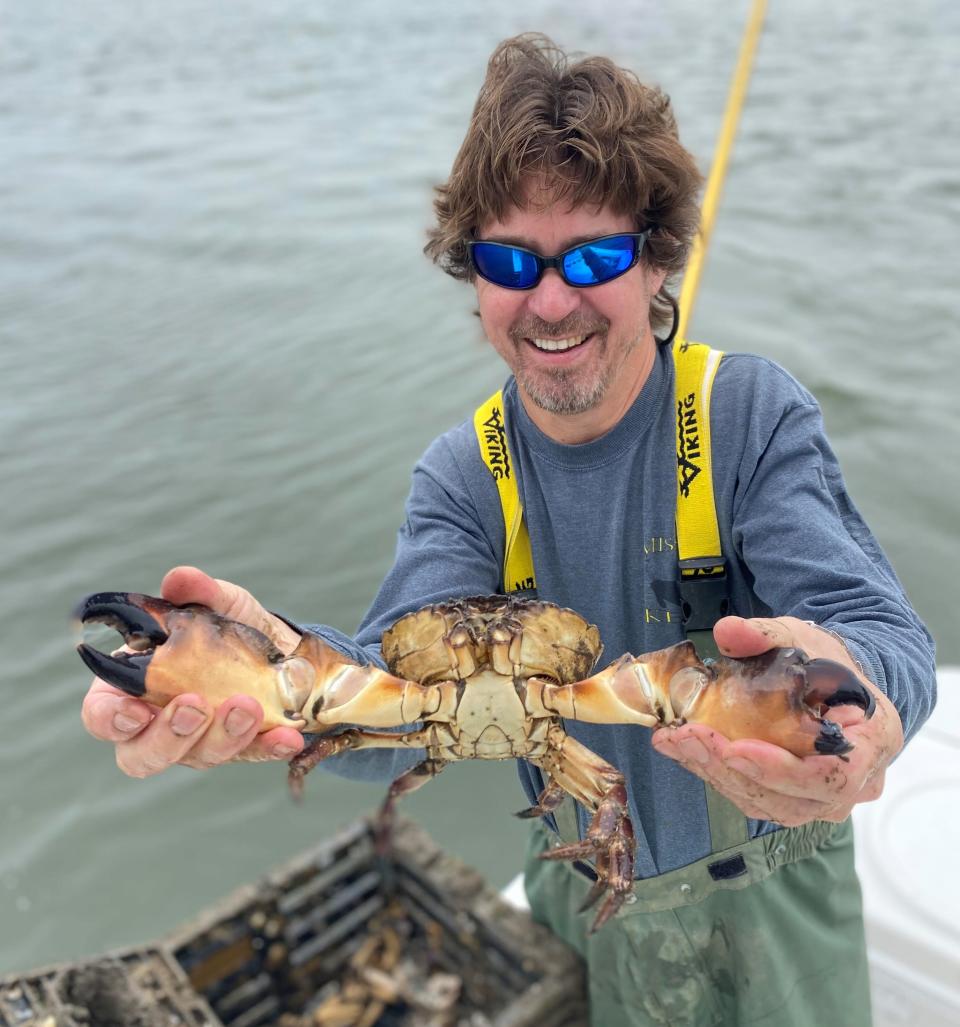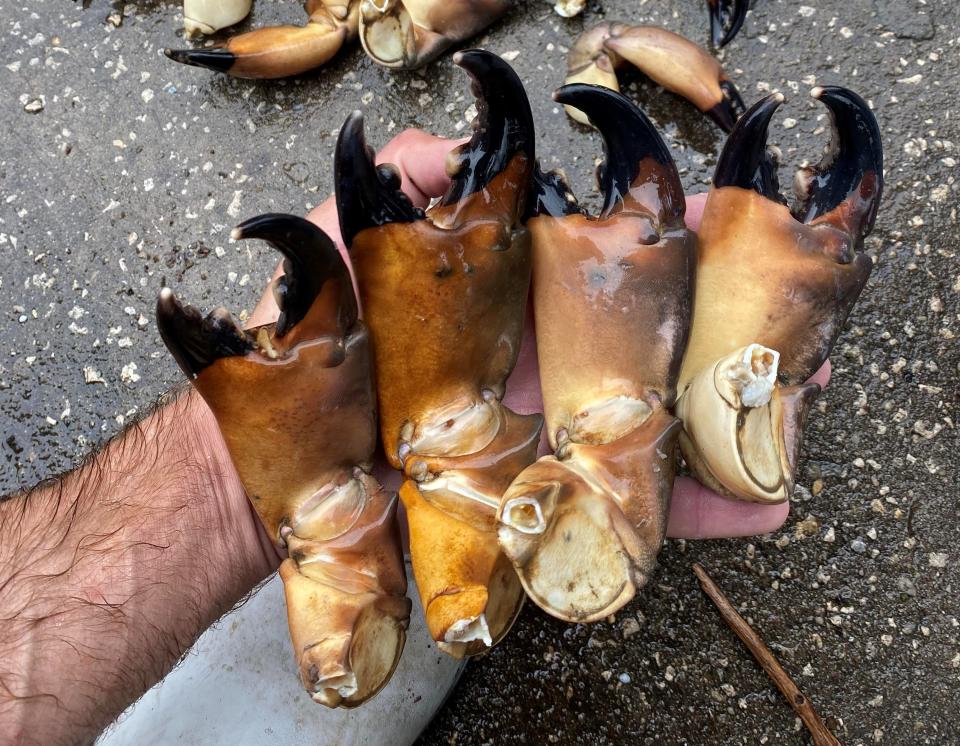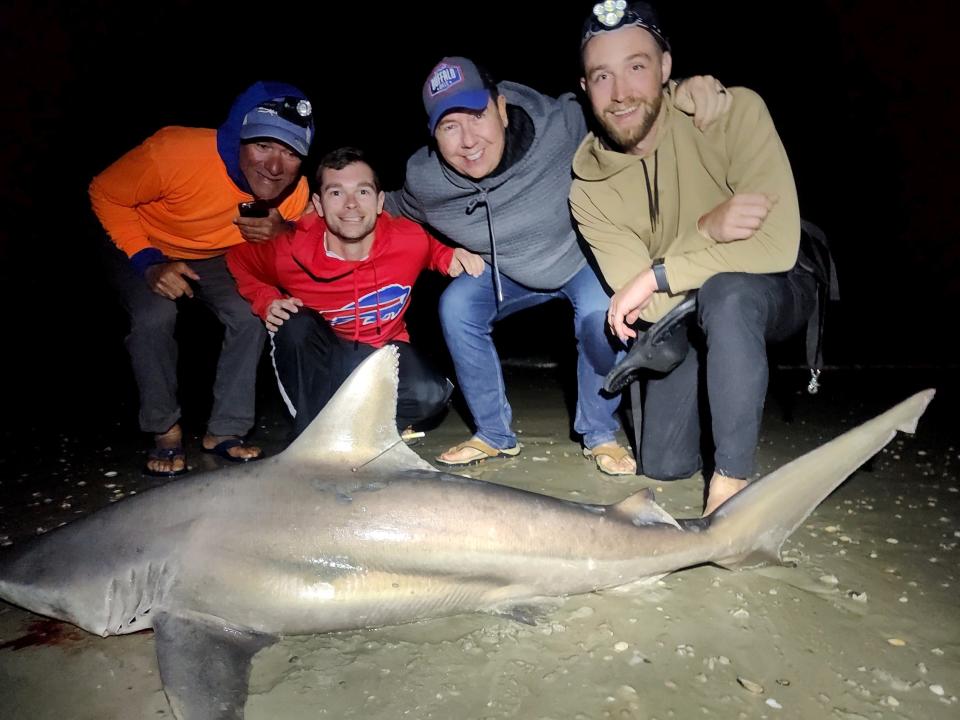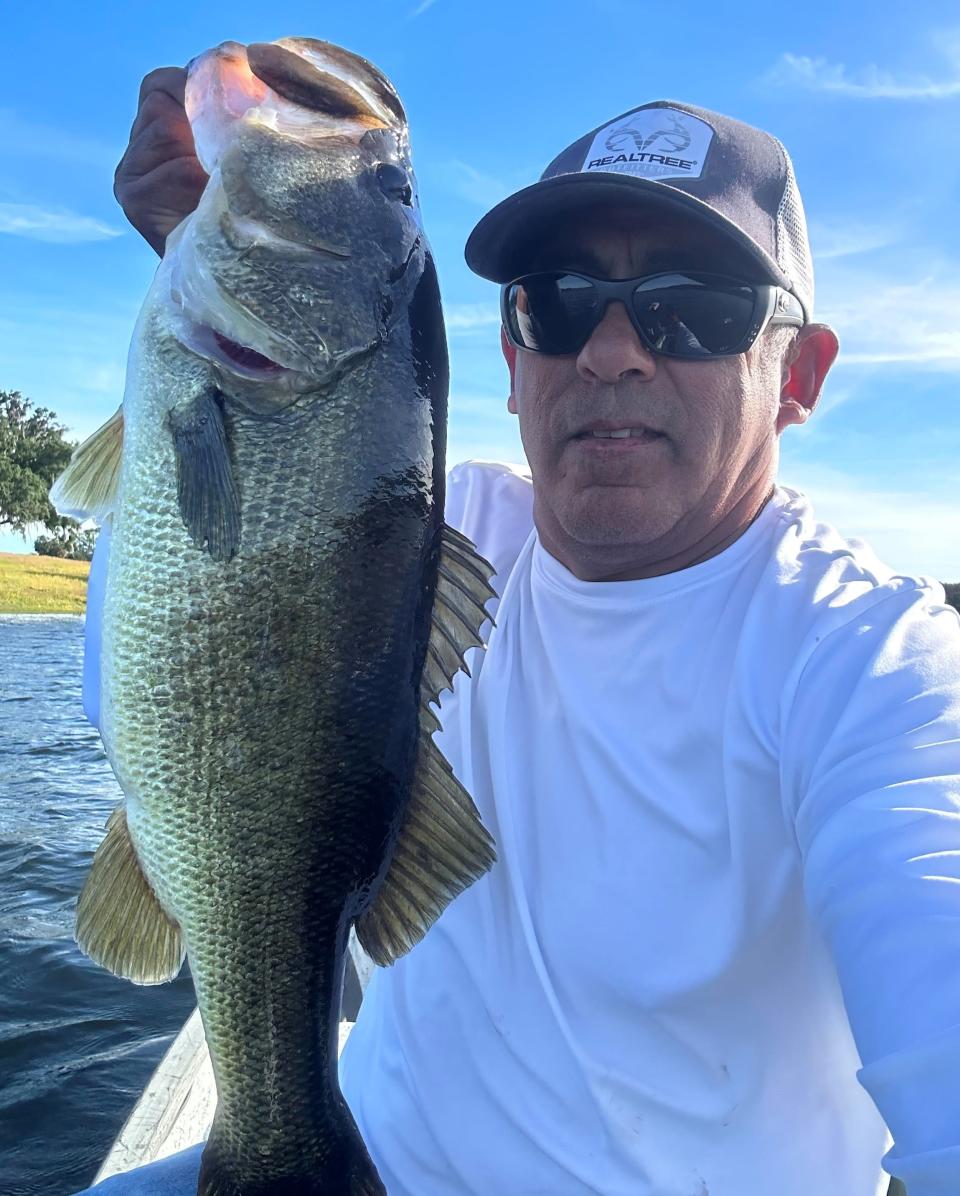Fishing Roundup: The generous stone crab will feed you today, and again a year later
Man, talk about sustainable food sources.
With a few weeks left until the season closes, let’s take a minute to salute the Florida stone crab. Just don’t expect him to salute you back (more on that shortly).
Ol’ Stony is the one critter from our waters who’ll provide you with a prime side dish today, and again next year, assuming he’s still taking your calls.
The stone crab is unique, especially compared to the neighborhood blue crab, because you can only take a claw, which remarkably grows back during the next year’s molting season.

BLUE CRAB The Florida blue crab is a summertime treat for some, bait for others
Not to say stone crabs were off my radar, but count me among those who didn’t realize the state law had changed on their harvesting. Until a few years back, you could only take one of the crab’s claws, leaving it some defense capability against predators.
Well, guess what. You can take both claws these days, because it was determined that the crab’s chief threat, the octopus, will devour the crab regardless of claw count.
Anyone else picturing Monty Python’s Black Knight in “Holy Grail,” gamely fighting to the end, in spite of losing one and then both arms — “Tis just a flesh wound!”
Where were we?
“Every pull is different, as far as how many we get,” says Capt. Jeff Patterson, who sprinkles crab traps throughout the intracoastal to supplement his fishing-guide business (Pole Dancer charter). “I’ve gotten anywhere from a couple claws up to almost 50. This season, my best pull had 6 pounds, and I’ve had a few at 3-4 pounds with up to 25 claws.”

Anyone can drop a crab trap, but you need to go through the registration process with the state’s Fish and Wildlife Commission on the FWC website (it’s free, by the way). You'll want to become familiar with size and bag limits while there.
It’s not as simple as finding your buoys and pulling up a trap, Capt. Jeff says. Probably because “finding them” isn’t always automatic.
“You deal with some theft but I’ve learned that it’s more of Mother Nature and people running over buoys,” he says. “I’ve had several of my traps move over 300 feet down the river with the combination of strong currents and boat waves.
“It’s a lot to keep up with and to be honest, every person I know personally who’s tried it recreationally doesn’t make it through a whole season without giving up.”
The challenges don’t end once you successfully pull up a trap with crabs. Once you bring them up, no day-dreaming allowed. Full attention is a must.
Why?
“Stone crabs can exert up to 19,000 pounds of pressure per square inch with their claw,” Capt. Jeff says. “You have to be careful breaking off their claws.”
A2) Come on, Oct. 15!! Shout out for the Oct. 18 Stone Crab Claw Eating Contest in Marathon! Eat 25 claws! #flkeys pic.twitter.com/2ZGbjpMxUZ
— The Florida Keys (@thefloridakeys) September 24, 2014
You think? And you thought Mike Tyson packed a punch.
Once home, Capt. Jeff says, you basically have two ways of preparing them — “I’ve gone back and forth steaming and boiling claws for eight minutes or so.”
Capt. Jeff says he doesn’t eat a lot of things he pulls from the intracoastal, because he’s no fan of the river’s current water quality. But he eats stone-crab claws.
“A good rule of thumb is to cook until you start seeing fat come out of the end of the claw where it was detached,” he says. “I feel like steaming makes the meat come off a little easier, in my opinion.”
And nearly all recipes include fresh lemon and your favorite dipping sauce.
Then, like a good farmer, you clean your plate, sit back, and wait for the next growing season. At which time you revisit Stony, who recently spent many months answering to Stumpy, and see if he’s again ready to give a little bit of himself for your dining pleasure.
Halifax/Indian River
The week’s windy conditions grew and grew and finally culminated (we think) with Thursday’s complete stinker.
You knew not to open the blinds when the first email you saw came from the BASS folks, announcing Thursday’s nixing of the first day of their big weekend tournament in Leesburg on the Harris Chain of Lakes.
Bassmaster Elite Harris Chain of Lakes
Matty Wong #texasboatworld #sdgマリン pic.twitter.com/kb2BA9qUCF— Texas Boat World (@TexasBoatWorld) April 10, 2024
Winds of 20-30 mph and gusts into the 40s was bad enough, but according to the BASS news release, even worse was expected: “This afternoon’s forecast includes the possibility of lightning and hail as well as wind gusts of up to 50 to 60 miles per hour.”
Better days ahead, though, and we’re talking immediately ahead, with warm temps and a fully blue ceiling for several days, After another day with west winds, the weekend will get modest blows from the north and northeast before Monday begins a long run of our typical springtime breezes out of the southeast.
Meanwhile …
“I’ve been hitting creeks in the river with a little bit of everything going on,” reports Capt. Jeff, who says he found a wide range of sporty fish, including inshore pompano, in Spruce Creek and smaller byways between Port Orange and New Smyrna Beach.
“I’ve been using just a split-shot and a live shrimp,” he says, “and I’ve also been using a live shrimp with a half-ounce to one-ounce weight in some of the deeper areas.”
Up in Ormond Beach at the Granada Pier on the river, Ike Leary says black drum and mangrove snapper have been the best catches, while a few small sharks are providing some lively fights.
Surf

The winds made things overly challenging during the week, but as decent conditions return, expect more catches of pompano as they continue their northbound trek to cooler waters.
Those who bothered to embrace this week’s hurdles will tell you the pompano are out there, regardless of what’s happening above the water’s surface.
“I’m hearing of people getting their pompano limits in Ponce Inlet,” Marco Pompano said midweek.
Offshore
We look ahead because looking behind on this week isn’t worth the effort. And looking ahead, the Sea Spirit is coming up on its new offering of “Spring Sunset” outings, from 1-9 p.m. on a few different Fridays, beginning next Friday (April 19).
Cost is $115 per angler. Check their website for more info or to register for a trip.
St. Johns

The freshwater folks are in that sweet-spot of the calendar. While bluegill and shellcrackers are building in numbers as the water warms, the speckled perch are still available, and sometimes in good numbers.
“A friend of mine caught 25 nice specks over two hours Monday evening,” says Don McCormick, who said he also found some roe-filled, pre-spawn specks that same day.
Halifax Sport Fishing Club
This month’s seminar will feature a familiar visitor to the area — “The Sinker Guy,” Chip Brundage. Along with making his famous “Sputnik” sinkers at his Jacksonville workbench, Chip gets out often to test his gear on surf lines up and down the east coast.
He’ll discuss the ins and outs of surf fishing next Thursday night (April 18), beginning about 7:30, at the HSFC’s Port Orange gathering spot — 3431 South Ridgewood. More info at HSFC.com.
Hook, line and clicker: Send us your fish pics
We want to see your most recent catch. Email your fish photos to ken.willis@news-jrnl.com.
Please include first and last name of angler(s), as well as type of fish (we're occasionally stumped). All are included with our online fishing report, and some occasionally make the print edition.
Do I need a fishing license?
You can find all the license info, including exemptions, on Florida's Fish and Wildlife Commission website: MyFWC.com. But the basics are: No: If you're 65 or older, 15 or younger, you don't need a license. “Probably” Not: If you're fishing with a licensed guide or charter boat, both of which often purchase commercial licenses that cover their customers. Yes: Most everyone else, including visitors from other states. Yes: Even if you're a shore-based angler (shoreline, dock, pier, bridge, etc.), and even if fishing with a shore-based guide. However: The shore-based license is free . . . But: You still need to register for that free license.
Where do I get a license and what does it cost?
Many bait shops sell licenses, as do the bigger retailers (Bass, Dick's, Walmart, etc.). Florida's FWC uses a third-party site for buying or renewing fishing licenses: GoOutdoorsFlorida.com. The cost: $17 for an annual license. Don't forget: Whether you're fishing fresh or saltwater, you need the specific license. Freshwater and saltwater licenses are both $17 annually.
I’m here on vacation, do I need a license?
Yes you do, and they're also available at GoOutdoorsFlorida.com or certain bait shops and big retailers. Cost: $17 for three days, $30 for seven days, $47 for a year. Also: Non-residents need to purchase that license even if they're just fishing from shoreline or shore-based structures. (Florida residents need that license, too, but they're free.)
This article originally appeared on The Daytona Beach News-Journal: Stone crabs were early to the sustainability game | Daytona Fishing

